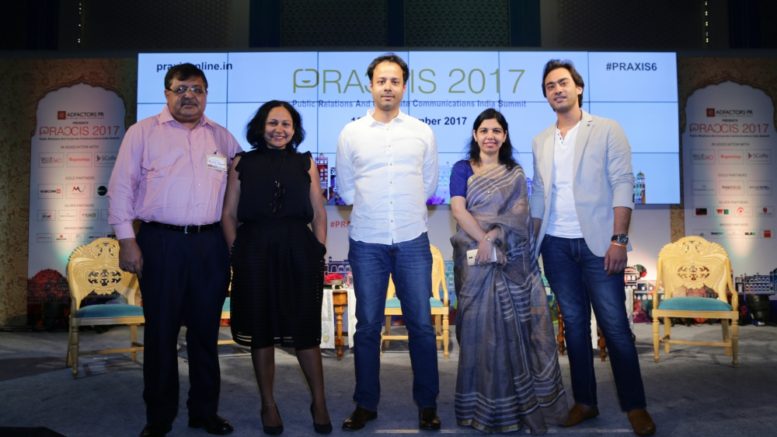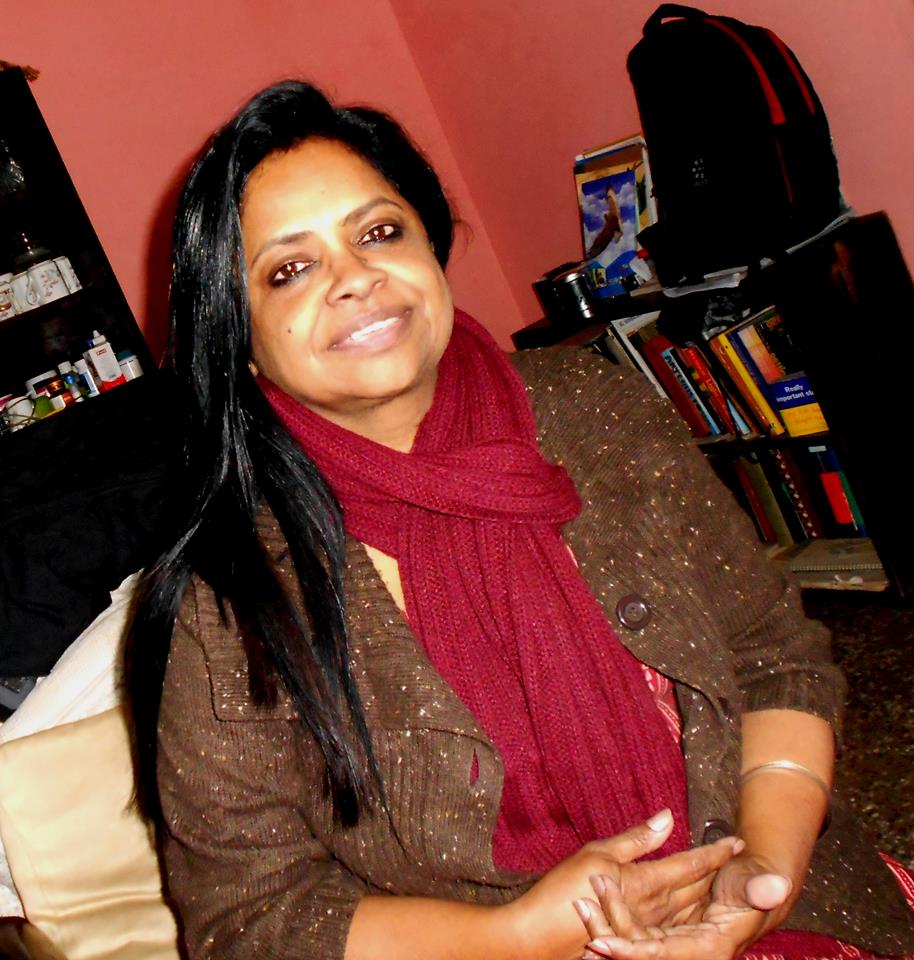Power Panel 4 on Day 2 of #PRAXIS6 revolved around the topic – Young Achievers in Communication from in-house and consultancies. In discussion were the participants – Manas Mrinal – Skateboard Media, Madhurjya Kotoky – Autodesk, Sheetal Singh – Micromax, Deepa Jayaraman – H+K Strategies and it was moderated by Dr Rajiv Kumar.
Clearly, there are major differences between consultancies and in-house roles, and there are pros and cons attached to each. The questions often put are: Where do you have a better work-life balance? Which is more lucrative? Which is a better career opportunity?
Whether it is good to work in-house or with a consultancy, we do face a dilemma said Dr Rajiv Kumar. But there are two important things to keep in mind – tracking the career growth map of the communicator and also to have a fix on the challenges ahead. Manas, who admitted that he had always been a consultancy guy, pointed out there are many plus points and also a lot of learning. Most importantly, “as a consultant, you are part of a success story of not just one brand, but many brands – and that’s what gives the ‘big high’,” he stated.
Having been on both sides of the table, Sheetal said consultancy gives a professional a base and a strong foundation. One is in touch with your profession when you are “in-house” and it also gives you “the opportunity to own a story and give shape it”, said Madhurjya, there is a need to learn a lot more about design for the demand for versatility on the customer side is much more. The variety, velocity, intensity at the consultancy level is a lot more liberating, opined Deepa.
The pros were many, but what were the negatives? On the consultancy side, there are issues, revealed Manas. There’s stress in relationship, there’s a lack of understanding when there’s crisis, which opens up a pandora’s box, so to say. The consultant does not know the inside story, which is one limitation. But firms should guard against superficiality, and you have to own the communication, and have to know the eco-system well. As a consultant, you work for a variety of sectors and you are constantly on the treadmill zone, said Deepa.
How does one make the choice? It is very pertinent for beginners to choose. What would be the tips that can be given to the young communicational professional? Consultancy has to be the base, said Manas firmly; this is clear when you track the success of those on the in-house side, most of whom have a base in consultancy. Madhurjya said youngsters should do thorough research on who they will work for, and this will only go a long way to improve the equality of the game. Things are constantly changing, so be on a constant learning-unlearning mode – this is critical! To be able to live and survive in this environment, transformation is necessary, advised Deepa; constant learning has to be the onus of both the individual and the organisation.
Relationships are formed along the journey, as PR professionals know how important this is. How to keep the evolving relationship intact? How to manage the dynamics of the relationship? Manas pointed out customisation is important, as each brand is different; there must be a good understanding at the beginning of the relationship, and some amount must be invested to make the relationship meaningful. Expectations and any mismatch need to be set right. Availability of senior talent is a gap, and this is where the core part of the communication is lost, said Sheetal. “It’s also about celebrating together and living it together,” said Deepa.
Whether they find themselves at a disadvantage or not, Manas was clear in making his point – all of us have to evolve. Getting in-depth knowledge is important. Definitely, a great deal of the ‘trust’ factor is involved in this relationship.
The last word was put in by Dr Kumar when he said that the communication professional has to become a consultant, and that is the way forward!






Be the first to comment on "Things are constantly changing, so be on a constant learning-unlearning mode."